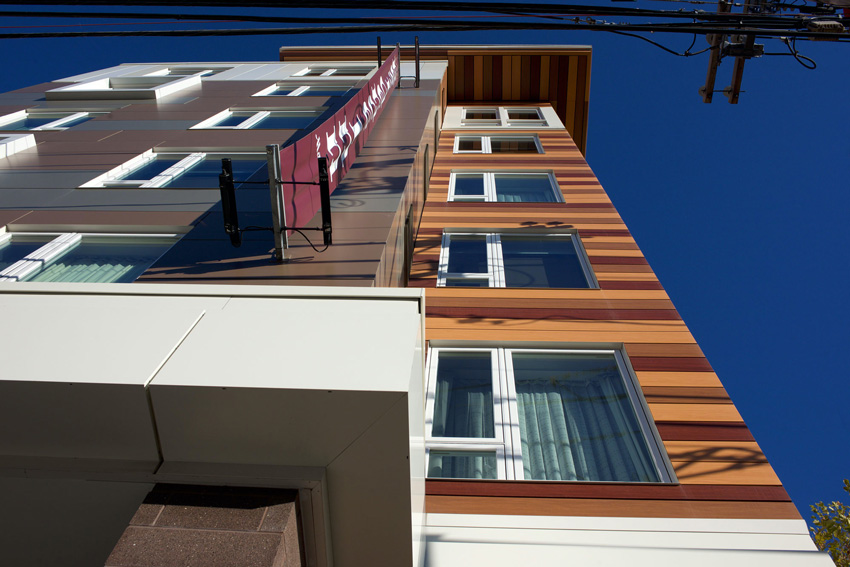Understanding Metal Composite Material, Installation, and Systems
Characteristics of a High-Quality, Tested MCM Sheet Manufacturer
Throughout the manufacturing process, a quality manufacturer must regularly and consistently test the product to ensure that it meets certification requirements, as well as perform quality checks on features pertaining to both performance and appearance. Quality sheet manufacturers provide products and materials that meet a variety of standards, including those released by ASTM, American Architectural Manufacturer’s Association (AAMA), National Fire Protection Association (NFPA), and the International Code Council (ICC).
Look for a manufacturer that meets the performance requirements of the International Code Council Evaluation Service (ICC-ES) Acceptance Criteria (AC) 25 and provides a valid product evaluation report including a third-party inspection agency. It is important to ensure that product performance provides a minimum bond integrity when tested in accordance with ASTM D1781. Other criteria such as continuous core density, panel thickness, and flatness are also important and identified in the manufacturer’s production standards or AC25. When anodized coil is used, the anodizing must meet the requirements of C-22, A-41, Class 1 (per the Aluminum Association), and the aluminum coil quality must meet ASTM B-209.
Due to MCM’s longevity and prevalence in the market, the IBC has dedicated a specific code section (1407) to the requirements for MCM in construction. IBC Section 1407.14 defines labeling requirements that show manufacturing and performance compliance for an installed panel and also serves to ensure future material traceability. IBC 1407.14 refers to Section 1703.5, which requires all materials and/or assemblies to be labeled in accordance with procedures in Section 1703.5.1 through 1703.5.4.
After deciding on a quality manufacturer, next you will need to work with a quality MCM fabricator.
Securing a Quality MCM Fabricator
MCM fabricators design, engineer, and fabricate panel systems meeting the defined project performance requirements in the areas of water penetration and structural performance.
Fabricators are responsible for creating project and shop drawings while also providing engineering calculations showing the adequacy of the panel system design to meet the load requirements, including wind, gravity, and (in certain cases) impact loads. After the material specification phase is complete, the fabricator helps in the determination of material choice, including structural components such as extruded aluminum profiles, fasteners, and engineered clips required to fabricate MCM sheets into cladding panels.
Fabricators are responsible for tests of the cladding systems that include wind-load resistance and water penetration. The fabricator is also heavily involved in fire-performance testing to meet the specification and local code requirements. Warranties for system performance are also provided by the MCM fabricator who is often responsible for the installation.
Characteristics of a Quality MCM Fabricator
Quality fabricators will not only fabricate the MCM, but they will also test and thoroughly engineer all of the systems. When selecting a quality fabricator, confirm that it will provide project shop drawings and engineering calculations stamped by a registered design professional to show the adequacy of the panel system design for the project. Ensure that your fabricator is using materials from quality sheet manufacturers and provides the specified warranties on products as well as installation.
The MCA also has a Certified MCM Fabricator Program through which fabricators maintain their qualifications, ensuring that they are current on the latest codes and technological advances.










